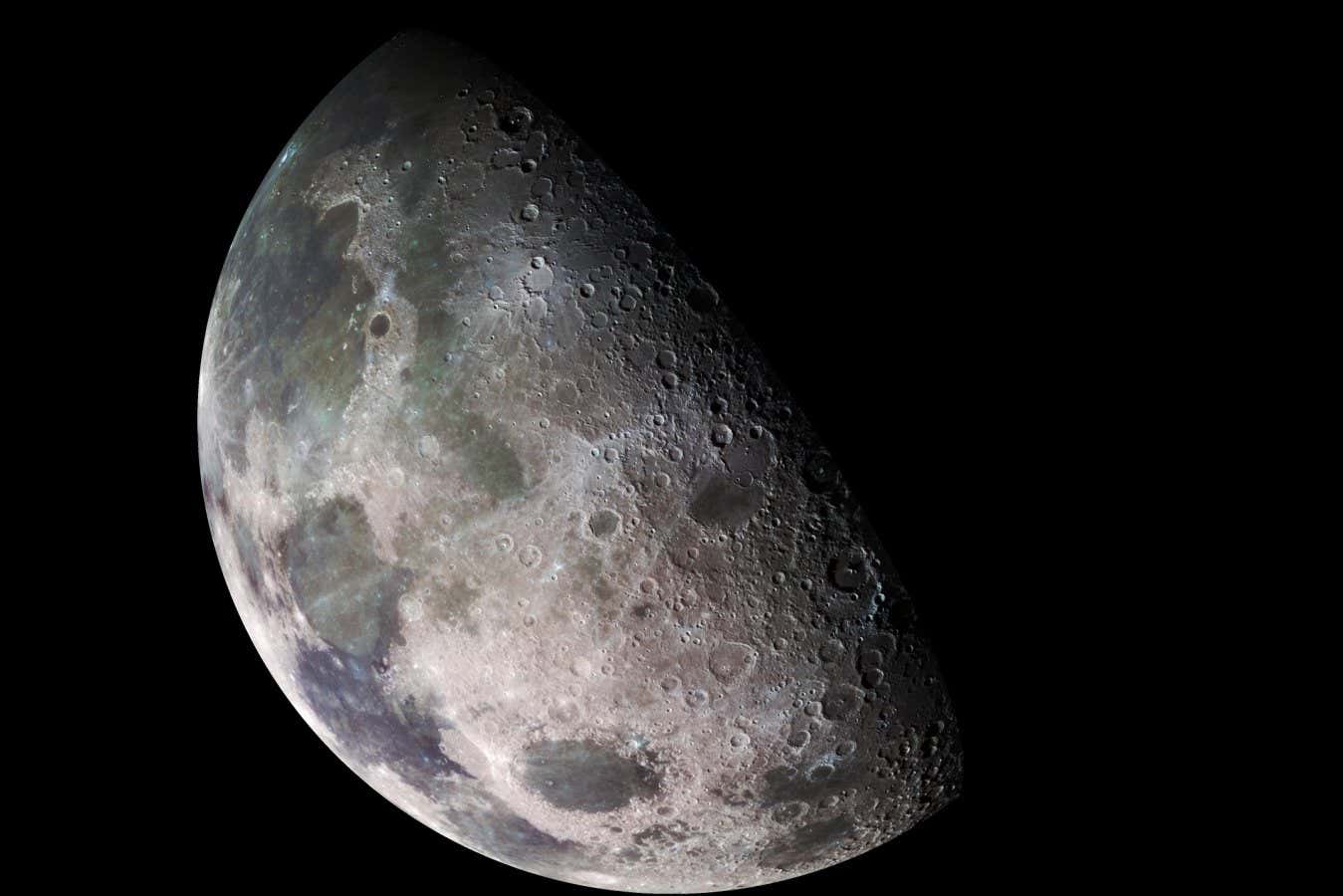A new look at the age of zircon crystals in a lunar rock sample brought back by NASA’s Apollo 17 mission in 1972 has revealed that the moon formed at least 4.46 billion years ago
By Alex Wilkins
23 October 2023
The moon may have formed at least 4.46 billion years ago – 40 million years earlier than we thought
NASA/JPL/USGS
A reanalysis of lunar rock has pushed back the age of the moon by 40 million years. This means it formed at least 4.46 billion years ago.
Scientists think the moon came into existence after a Mars-sized planet smashed into Earth and launched a ball of molten rock into space. As the magma surface of this object cooled and solidified, silicon crystals called zircons were formed. Because of their resilience to heat and harsh environments, the crystals still survive and can be used to identify the moon’s earliest moments.
Zircon crystals contain radioactive uranium, which decays into lead at a well-defined rate, so scientists can determine a rock sample’s age by measuring the amount of lead and uranium in it.
Advertisement
Read more
We could make roads on the moon by melting lunar dust
Philipp Heck at the University of Chicago and his colleagues have now reanalysed a sample of zircons from lunar rock brought back from NASA’s Apollo 17 mission in 1972, using a technique called atom probe tomography, and found that the zircons are 4.46 billion years old.
“We now have a date of the zircons, so we can tell the time by which the magma ocean must have been solidified, or largely solidified,” says Heck. “It essentially anchors the entire lunar chronology. It’s almost like putting a nail into the lunar timeline.”
